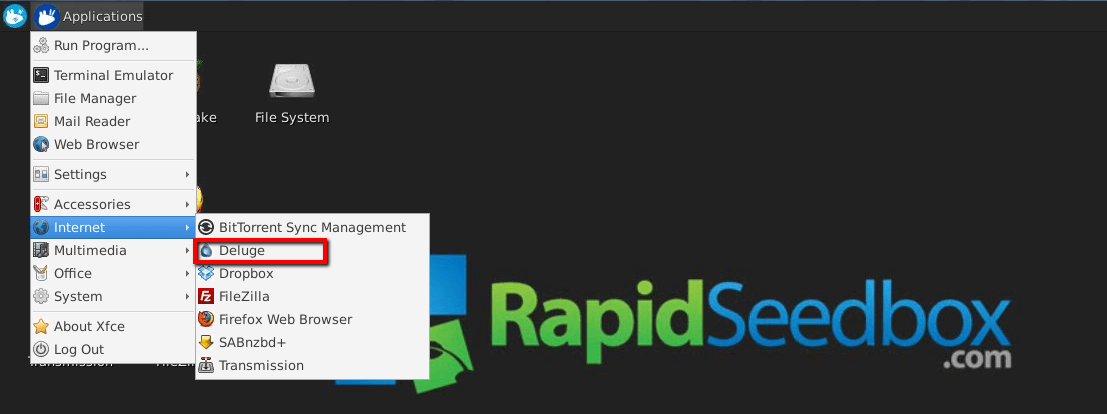
Topics focused on piracy & pirating specific content will be removed.
#DELUGE CLIENT TERMINAL HOW TO#
This subreddit is for the discussion of torrenting culture and learning how to use torrents. We only have a few, but they are important. Please read over the rules before contributing. We are a thriving community dedicated to helping users old and new understand and use torrents. Now you can access the deluge web client from your browser.Welcome to the torrents subreddit. Next look at the file /docker/delugevpn/config/supervisord.log to check if everything is working fine. Review the settings to make sure you didn’t miss anything. Step 9 - Finalize the creation of containerĬlicking “Apply” will bring you back to the general setting and finally click “next” to go to the final review. LAN_Network - Set to your local network format. Step 8 - Configure the Environment container settings Under “Environment” TabĪ number of environment variables need to be added. Step 7 - Configure the port settings container Under “Port Settings” TabĬhange “local port” from “auto” to the value of the container port. If you have already a folder, you can add it and mount path as “/data” (without the quotes)
#DELUGE CLIENT TERMINAL DOWNLOAD#
Now we need to specify the download location for deluge. Head over to the config folder we create under “deluge” and the mount path type “/config” (without the quotes) Once the folder are created, we need to map the config folder to the container by clicking “Add folder”.

I use the default one and did not change the container name. You can keep the default entry of the name or change the containername. Step 5 - Configure the General container settings This will launch the Create Container wizard. Step 4 - Create a container from the downloaded image.Ĭlick Image, and select binhex/arch-delugevpn:latest and click “launch”. Click Download and choose the latest version Search for “Deluge” and click on binhex/arch-delugevpn container.Reboot your synology after this step Step 3 - Downloading the Deluge Docker image ** Under User-defined script: /volume1/docker/tun/tun.sh So the script is now created, we need to make a scheduled task to run the script at startup.Ĭreate > Triggered Task > User Defined Script


# Load the tun module if not already loaded # Create the necessary file structure for /dev/net/tun
#DELUGE CLIENT TERMINAL TORRENT#
Deluge is a popular torrent client that is widely accepted by private torrent. The download station provided by synology is suffice however some private torrent may not recognize download station as their approve client. The instruction should be roughly the same with other versions The deluge will be running on a web based user interface, the DSM version this guide is based on DSM 6.1.7. This is a guide on setting up Deluge on a Synology using a Docker image.

Step 1 - Determine your PUID and PGID values.


 0 kommentar(er)
0 kommentar(er)
